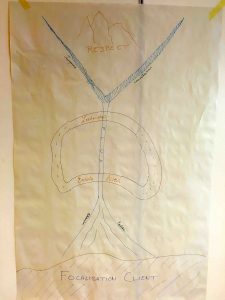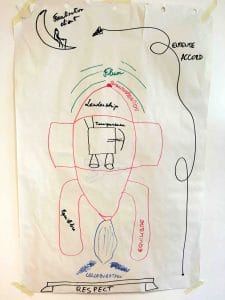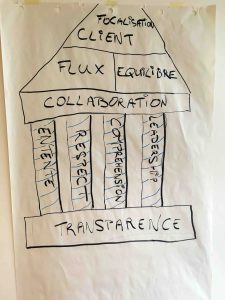
J’ai eu la chance de présenter l’atelier Kanban Values de Mike Burrows à Mix-IT dans les locaux de CPE Lyon les 21 et 22 Avril 2016. Cela fait toujours bizarre de retourner dans son ancienne école quelques années plus tard mais pour une première fois en tant que speaker, cela en valait la peine ! Et même si présenter un sujet sur les valeurs auprès d’un public majoritairement formé de développeurs n’était pas évident, quelques âmes courageuses se sont risquées à l’aventure ! Voilà ce qu’il s’est passé ! 😉
Le pitch
Lorsque l’on participe à Mix-IT en tant que speaker, une des premières étapes à passer après la sélection au CFP est celle du pitch ! En effet, chaque speaker a 30 secondes pour présenter sa session afin de donner envie aux participants de venir ! J’ai donc réfléchi aux idées principales que je voulais transmettre (gentiment aidé par Grégory Alexandre) et en suis arrivé au résultat suivant :
Bonjour à tous, je m’appelle Olivier My et j’animerais un atelier autour des valeurs de Kanban. Au lieu de rester au niveau conceptuel, je vous propose de les explorer ensemble afin de mieux les comprendre et ainsi pouvoir mieux les contextualiser. L’objectif étant que vous ressortiez de l’atelier avec 3 choses : une prise de recul sur votre utilisation actuelle, une stratégie différente d’implémentation de Kanban – allant au-delà du simple tableau de tâches et des limites – et de nouveaux amis !
Partons maintenant sur l’atelier ! 😉
L’atelier
Etape 1 : Exploration
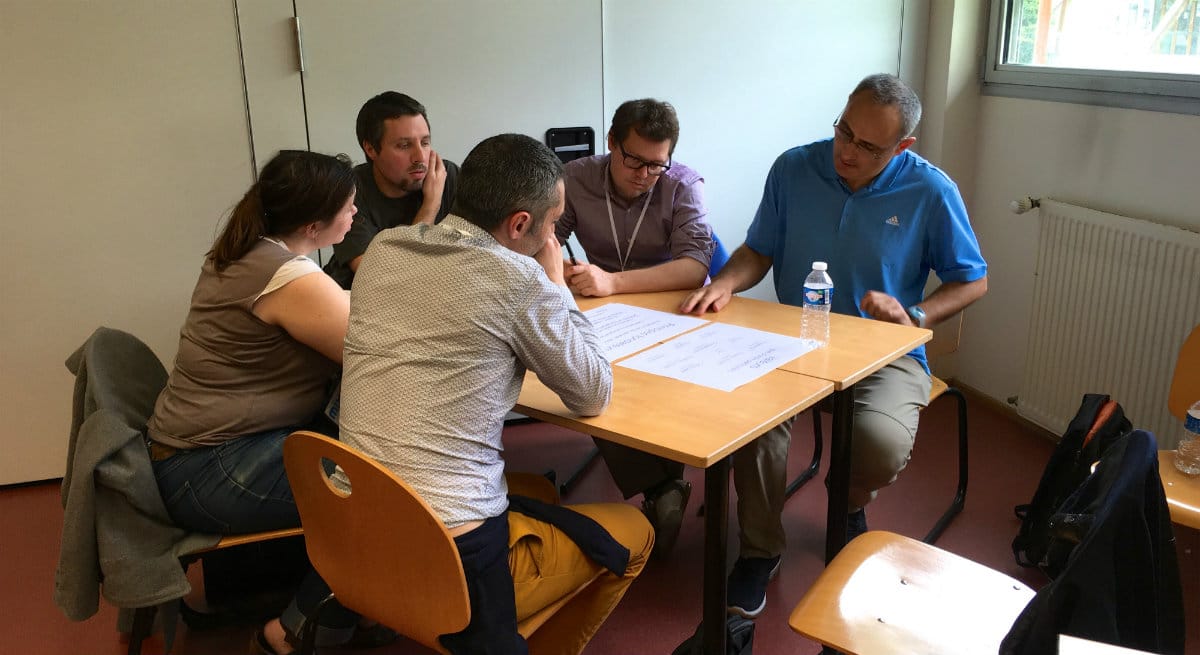
Cette première étape consiste à construire un système Kanban reliant les 9 valeurs Kanban :
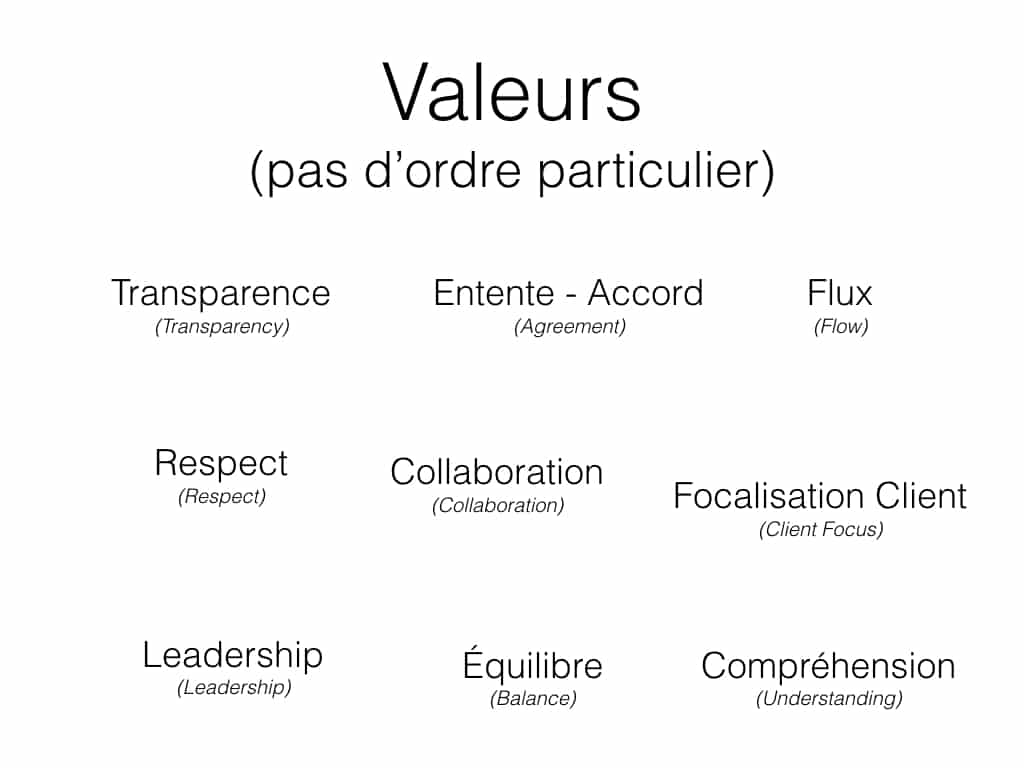
à ses 4 principe fondateurs :

et ses 6 pratiques fondamentales :
Les discussions autour des valeurs sont toujours riches, et cette première étape en est un bel exemple. Après une quinzaine de minutes de travail par petit groupe, nous passons alors à un débriefing tous ensemble.à ses 4 principes fondateurs et 6 pratiques fondamentales :
Nous passons par chaque principe / pratique et chaque groupe :
- Révèle sa réponse
- Explique le sens donné derrière la valeur sélectionnée
- Se confronte aux réponses données par l’auteur
NB : Il est à noter qu’aucune réponse n’est fondamentalement fausse sachant quelle est toujours réfléchie et justifiée. Maintenant, l’objectif est surtout de mieux comprendre le sens donné par l’auteur à ces valeurs de pouvoir plus aisément les utiliser par la suite. Vous pourrez retrouver les explications dans l’article original (en anglais) publié en 2013 par Mike Burrows ou l’article traduit (en français) sur ce blog.
L’étape d’exploration terminée, nous passons à l’étape suivante, celle de l’appropriation ! 😉
Etape 2 : Appropriation
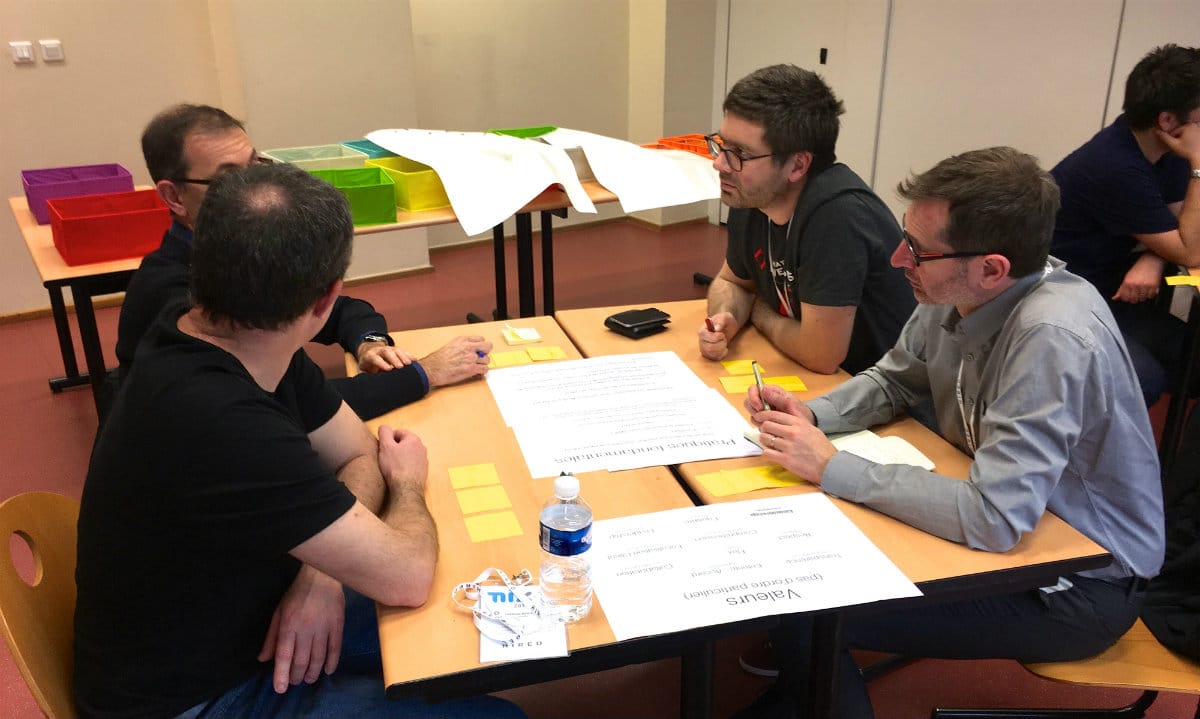
Cette étape se déroule en 2 phases distinctes :
- Dans un premier temps, je demande aux participants de réfléchir individuellement au Top 3 des valeurs qui résonnent en eux personnellement – comme à l’habitude, une valeur par Post-it. J’ai laissé un moment de partage en sous-groupe pour permettre aux participants d’expliquer leurs choix et ainsi continuer le processus d’appropriation.
- Dans un second temps et sur une suggestion de Christophe Keromen, je les invite à définir en sous-groupe une stratégie d’implémentation Kanban basée sur les valeurs – autrement dit définir un Top 3 des valeurs qui leur paraissent les plus importantes à mettre en place en premier – dans le cadre d’une problématique réelle :
- Chacun présente rapidement son contexte et ses problématiques principales
- Le sous-groupe sélectionne un des contextes et réfléchit à la stratégie qui leur semblerait la plus pertinente
- En débriefing, chaque sous-groupe présente le contexte étudié et explique la stratégie choisie
Note : Le second temps « officiel » de l’atelier Kanban Values était censé être la définition individuelle d’un Top 3 des valeurs les plus importantes ou confrontantes dans le cadre de son propre contexte actuel. Le débriefing correspondait alors au partage du trio de tête des valeurs par sous-groupe pour chacune des catégories. Lors de précédentes expérimentations, les participants avaient pu ressentir un sentiment de frustration dans le sens où ce second temps « officiel » restait trop superficiel.
La variante effectuée pour Mix-IT devait permettre d’approfondir le processus de contextualisation des valeurs Kanban par la définition collective d’une stratégie sur un cas concret. Elle semble d’ailleurs avoir été très appréciée des participants.
Etape 3 : Ancrage
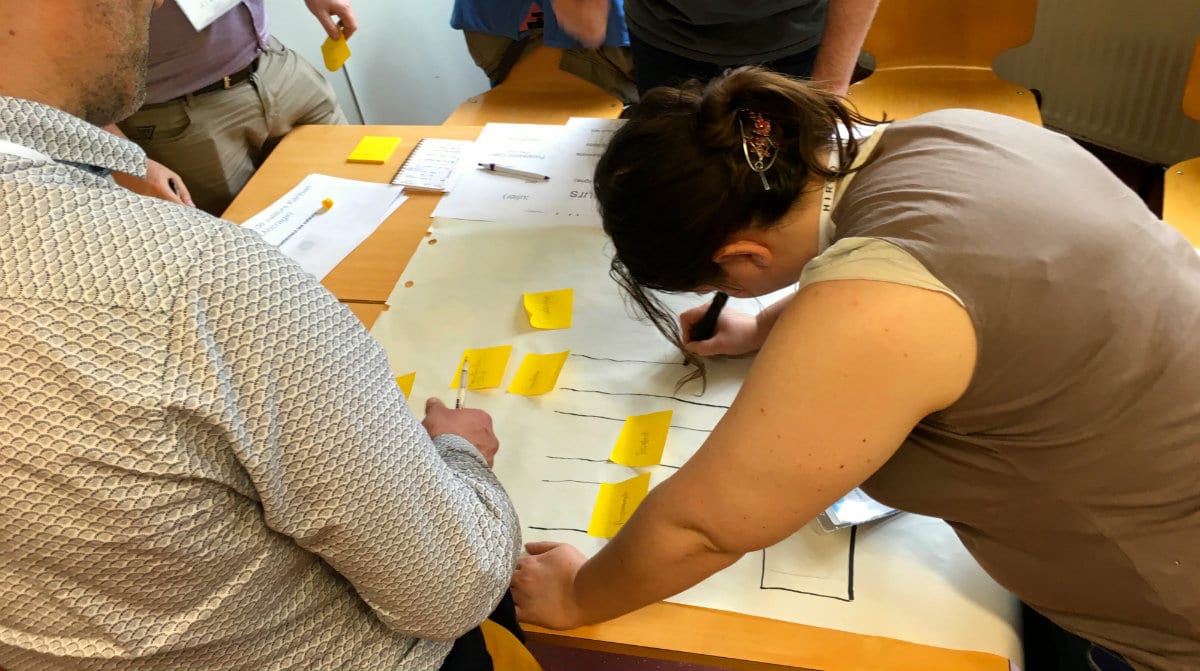
Cette dernière étape a pour objectif d’ancrer les valeurs chez les participants pour les aider à les retenir. C’est également le moment de relâchement et de détente après 2 étapes de réflexions, partages et échanges.
Ainsi, quoi de mieux qu’une représentation visuelle ? 🙂
2 modèles sont alors proposés par défaut aux participants les moins créatifs :

L’intérêt de cette approche est qu’elle permet aux participants de catégoriser les 9 valeurs de Kanban. En effet, au lieu de les apprendre toutes d’un coup, il peut être plus facile de retenir des regroupements dans un premier temps :
- Quelle est ou quelles sont les valeurs au coeur de l’approche ?
- Quelles sont les valeurs qui en découlent ?
- Quelles sont les valeurs « piliers » ?
- Quelle est la valeur « socle » ?
- Quelle est la valeur vers laquelle on souhaite tendre ?
- …
Après une quinzaine de minutes de production, les résultats sont affichés au mur. Chaque sous-groupe vient ensuite présenter son visuel.
En échangeant avec certains participants, ils étaient étonnés du fait que malgré certains désaccords entre-eux pendant les étapes précédentes, la représentation visuelle fit l’unanimité très rapidement. Cela m’a emmené à me demander si ce n’était pas une conséquence directe des étapes d’exploration, d’appropriation et de contextualisation. 🙂
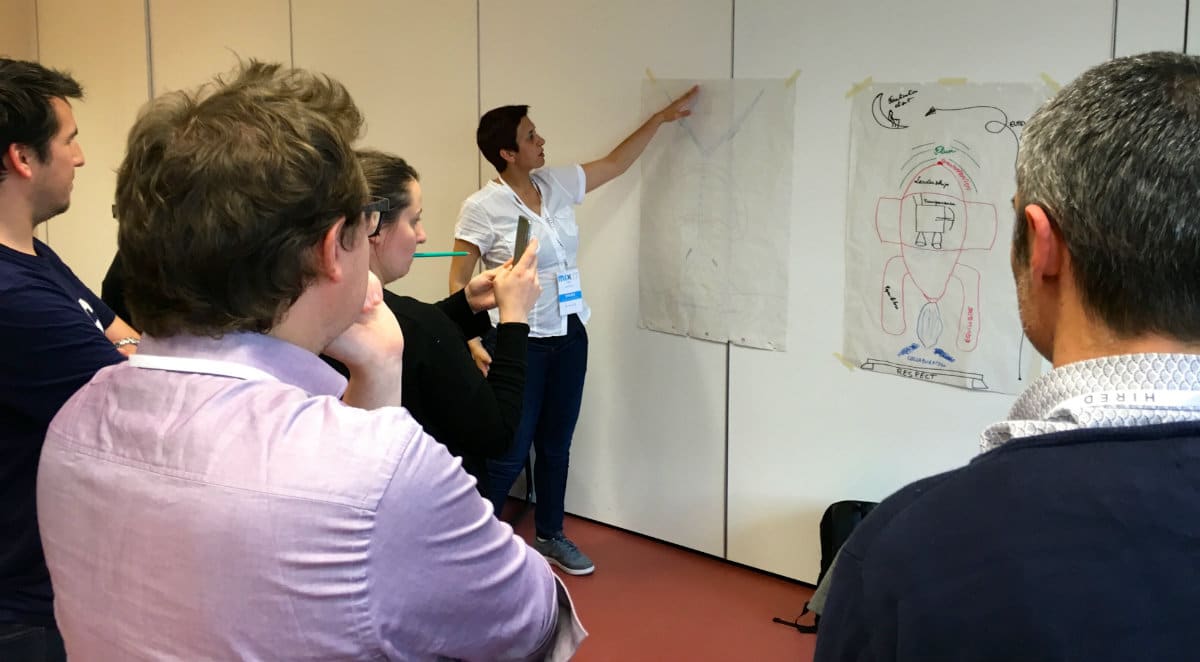
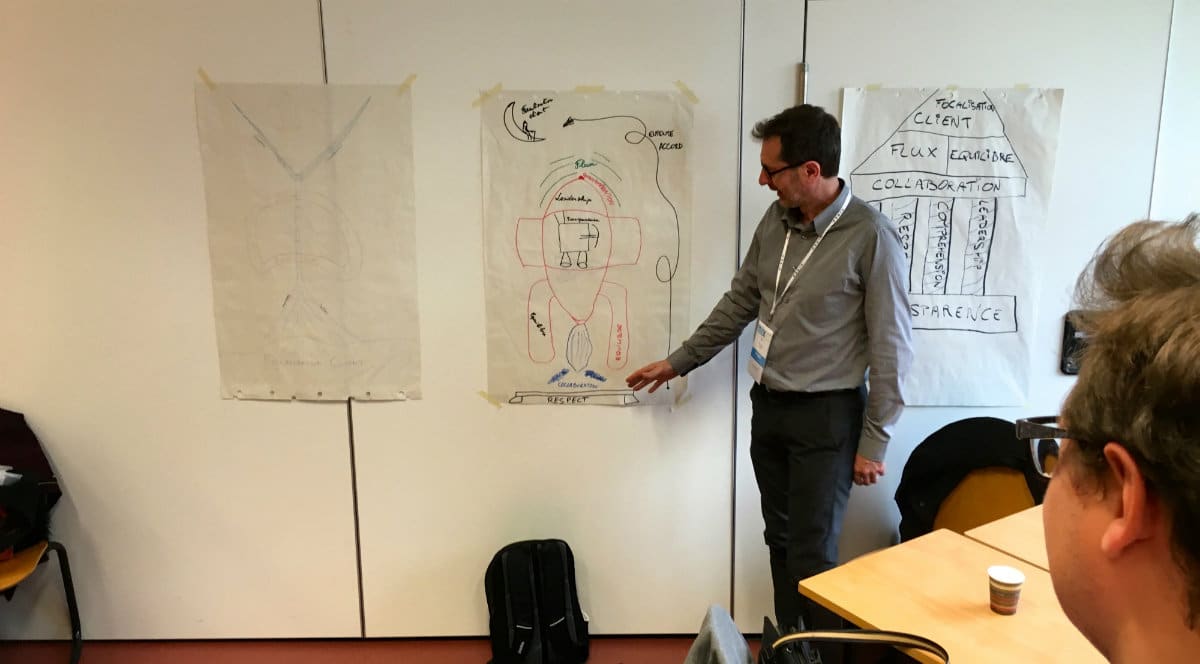
Résultats
Et lorsque la créativité n’a plus de limites, on peut voir apparaître des lapins ! 😀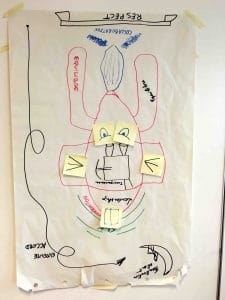
Conclusion
J’apprécie beaucoup cet atelier dans le sens où il est avant-tout un moment de partage et d’échanges. Il permet aux participants de voir le Kanban autrement et d’apporter un peu plus de sens dans leur implémentation. D’ailleurs, il a reçu de bons feedbacks. Je pense cependant que pour en retirer le maximum, les participants devraient avoir une connaissance minimale de l’approche Kanban de manière à pouvoir la mettre en perspective.
Ayant malheureusement commencé la session en retard, je regrette juste de ne pas avoir pu prendre suffisamment de temps pour un feedback plus général. En effet, voici quelques éléments sur lesquels j’aurais apprécié avoir un retour :
- Quels sont les éléments qui vous ont amené à participer à l’atelier ?
- Qu’avez-vous pensé du format d’animation ?
- Qu’allez-vous raconter de cette expérience ?
Je tiens à remercier l’équipe d’organisation de Mix-IT pour m’avoir permis d’animer cet atelier et bien évidemment les participants pour leur bienveillance et leur bonne humeur : si l’atelier fut un succès, après tout, c’est surtout grâce à eux ! 😉
Ressources
- Le lien vers les instructions originales de Mike Burrows
- Le lien vers les instructions traduites en français par Christophe Keromen
- Un article de Christophe Keromen sur une session effectuée à l’Agile Playground Paris
- Quelques photos et infos d’une soirée Kanban Values co-animée avec Christophe Keromen pour le French Kanban User Group Paris

